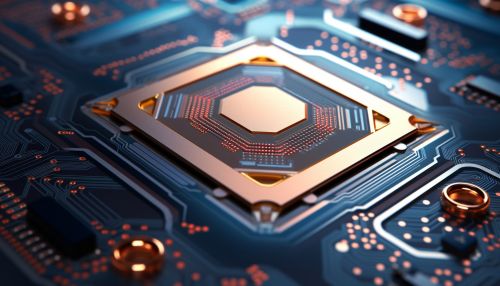The Role of Microscale Heat Transfer in Electronic Cooling
Introduction
Microscale heat transfer is a critical aspect of electronic cooling, which is the practice of reducing the operating temperature of electronic devices. This discipline is a subset of heat transfer, a fundamental concept in thermodynamics. The role of microscale heat transfer in electronic cooling is becoming increasingly important as electronic devices continue to miniaturize and their power densities increase.


Microscale Heat Transfer
Microscale heat transfer is the study of heat transfer phenomena at a scale of less than one millimeter. It is a specialized field within the broader discipline of heat transfer, which also includes macroscale and nanoscale heat transfer. The principles of microscale heat transfer are applied in various fields, including electronics, where they play a crucial role in the design and operation of cooling systems for electronic devices.
Principles of Microscale Heat Transfer
The principles of microscale heat transfer are based on the laws of thermodynamics, specifically the first and second laws. The first law, also known as the law of energy conservation, states that energy cannot be created or destroyed, only transferred or converted from one form to another. In the context of electronic cooling, this means that the heat generated by an electronic device must be transferred away from the device to prevent overheating.
The second law of thermodynamics, also known as the law of entropy, states that heat naturally flows from areas of high temperature to areas of low temperature. This principle is used in electronic cooling to guide the design of cooling systems, which aim to facilitate the flow of heat away from electronic devices.
Microscale Heat Transfer Mechanisms
There are three primary mechanisms of heat transfer: conduction, convection, and radiation. At the microscale, conduction and convection are the most significant.
Conduction is the transfer of heat through a solid material. In electronic devices, heat is conducted through the device's components and the materials used in its construction.
Convection is the transfer of heat through a fluid (liquid or gas). In electronic cooling, convection is often used to transfer heat away from the device, either by natural convection (where the fluid motion is driven by temperature differences) or forced convection (where the fluid motion is driven by external forces, such as a fan).
Radiation, the transfer of heat through electromagnetic waves, is typically less significant in electronic cooling due to the small size and relatively low temperatures of electronic devices.
Electronic Cooling
Electronic cooling is a critical aspect of the design and operation of electronic devices. As electronic devices become smaller and more powerful, they generate more heat per unit volume, increasing the need for effective cooling.
Importance of Cooling in Electronics
Effective cooling is crucial for the performance and longevity of electronic devices. Excessive heat can degrade the performance of electronic components, leading to slower operation, reduced lifespan, and potentially catastrophic failure.
In addition to affecting the device itself, excessive heat can also pose a safety risk. For example, batteries in electronic devices can overheat and catch fire if not properly cooled.
Cooling Techniques in Electronics
There are various techniques used to cool electronic devices, many of which rely on the principles of microscale heat transfer.
Heat sinks are commonly used in electronic devices to dissipate heat. They are typically made of a material with high thermal conductivity, such as aluminum or copper, and have a large surface area to facilitate heat transfer to the surrounding air.
Thermal interface materials (TIMs) are used to improve the thermal contact between heat sources (such as electronic components) and heat sinks. They fill in the microscopic air gaps between the two surfaces, reducing the thermal resistance and improving heat transfer.
Liquid cooling systems are used in high-performance electronic devices, such as gaming computers and data centers. They use a liquid coolant to absorb heat from the device and transfer it to a radiator, where it is dissipated to the surrounding air.
Thermoelectric coolers, also known as Peltier coolers, use the Peltier effect to create a temperature difference across a junction of two different materials. They are often used in small, portable electronic devices.
The Role of Microscale Heat Transfer in Electronic Cooling
Microscale heat transfer plays a crucial role in electronic cooling, particularly as electronic devices continue to miniaturize.
Impact on Cooling System Design
The principles of microscale heat transfer are used to guide the design of cooling systems for electronic devices. For example, the design of heat sinks and thermal interface materials is based on the principles of conduction and convection at the microscale.
As electronic devices become smaller, the importance of microscale heat transfer in cooling system design increases. For example, in microelectronic devices, the heat generated per unit volume is much higher than in larger devices, making effective heat transfer at the microscale crucial.
Challenges and Opportunities
The increasing importance of microscale heat transfer in electronic cooling presents both challenges and opportunities. On one hand, the high heat fluxes and small length scales involved can make heat transfer more difficult. On the other hand, the unique phenomena that occur at the microscale, such as microscale convection and phase change, offer new opportunities for innovative cooling solutions.
